Tony Wang
NVIDIA Nemotron Nano 2: An Accurate and Efficient Hybrid Mamba-Transformer Reasoning Model
Aug 21, 2025



Abstract:We introduce Nemotron-Nano-9B-v2, a hybrid Mamba-Transformer language model designed to increase throughput for reasoning workloads while achieving state-of-the-art accuracy compared to similarly-sized models. Nemotron-Nano-9B-v2 builds on the Nemotron-H architecture, in which the majority of the self-attention layers in the common Transformer architecture are replaced with Mamba-2 layers, to achieve improved inference speed when generating the long thinking traces needed for reasoning. We create Nemotron-Nano-9B-v2 by first pre-training a 12-billion-parameter model (Nemotron-Nano-12B-v2-Base) on 20 trillion tokens using an FP8 training recipe. After aligning Nemotron-Nano-12B-v2-Base, we employ the Minitron strategy to compress and distill the model with the goal of enabling inference on up to 128k tokens on a single NVIDIA A10G GPU (22GiB of memory, bfloat16 precision). Compared to existing similarly-sized models (e.g., Qwen3-8B), we show that Nemotron-Nano-9B-v2 achieves on-par or better accuracy on reasoning benchmarks while achieving up to 6x higher inference throughput in reasoning settings like 8k input and 16k output tokens. We are releasing Nemotron-Nano-9B-v2, Nemotron-Nano12B-v2-Base, and Nemotron-Nano-9B-v2-Base checkpoints along with the majority of our pre- and post-training datasets on Hugging Face.
Facilitating Longitudinal Interaction Studies of AI Systems
Aug 14, 2025Abstract:UIST researchers develop tools to address user challenges. However, user interactions with AI evolve over time through learning, adaptation, and repurposing, making one time evaluations insufficient. Capturing these dynamics requires longer-term studies, but challenges in deployment, evaluation design, and data collection have made such longitudinal research difficult to implement. Our workshop aims to tackle these challenges and prepare researchers with practical strategies for longitudinal studies. The workshop includes a keynote, panel discussions, and interactive breakout groups for discussion and hands-on protocol design and tool prototyping sessions. We seek to foster a community around longitudinal system research and promote it as a more embraced method for designing, building, and evaluating UIST tools.
RaSCL: Radar to Satellite Crossview Localization
Apr 22, 2025Abstract:GNSS is unreliable, inaccurate, and insufficient in many real-time autonomous field applications. In this work, we present a GNSS-free global localization solution that contains a method of registering imaging radar on the ground with overhead RGB imagery, with joint optimization of relative poses from odometry and global poses from our overhead registration. Previous works have used various combinations of ground sensors and overhead imagery, and different feature extraction and matching methods. These include various handcrafted and deep-learning-based methods for extracting features from overhead imagery. Our work presents insights on extracting essential features from RGB overhead images for effective global localization against overhead imagery using only ground radar and a single georeferenced initial guess. We motivate our method by evaluating it on datasets in diverse geographic conditions and robotic platforms, including on an Unmanned Surface Vessel (USV) as well as urban and suburban driving datasets.
AGENTiGraph: An Interactive Knowledge Graph Platform for LLM-based Chatbots Utilizing Private Data
Oct 15, 2024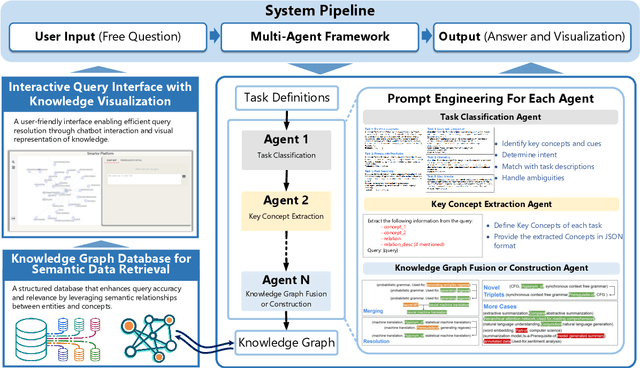
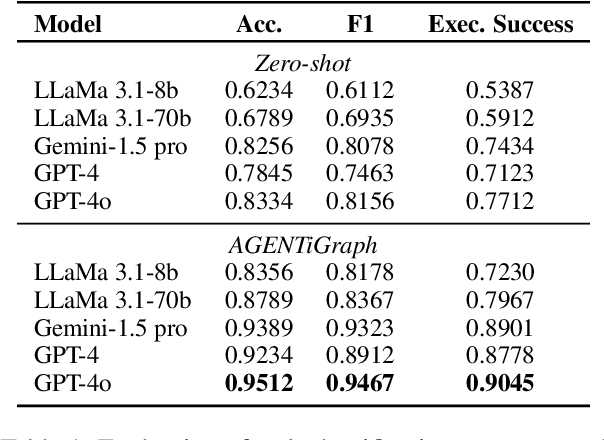
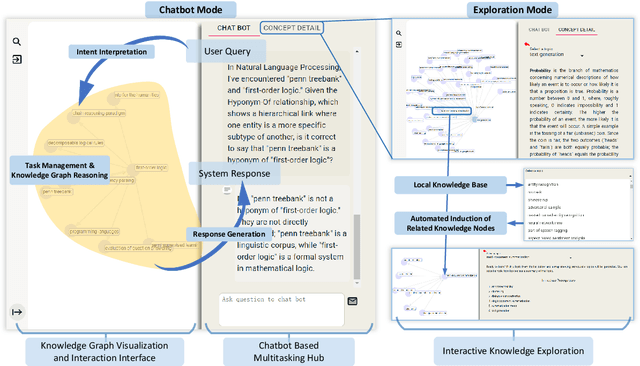
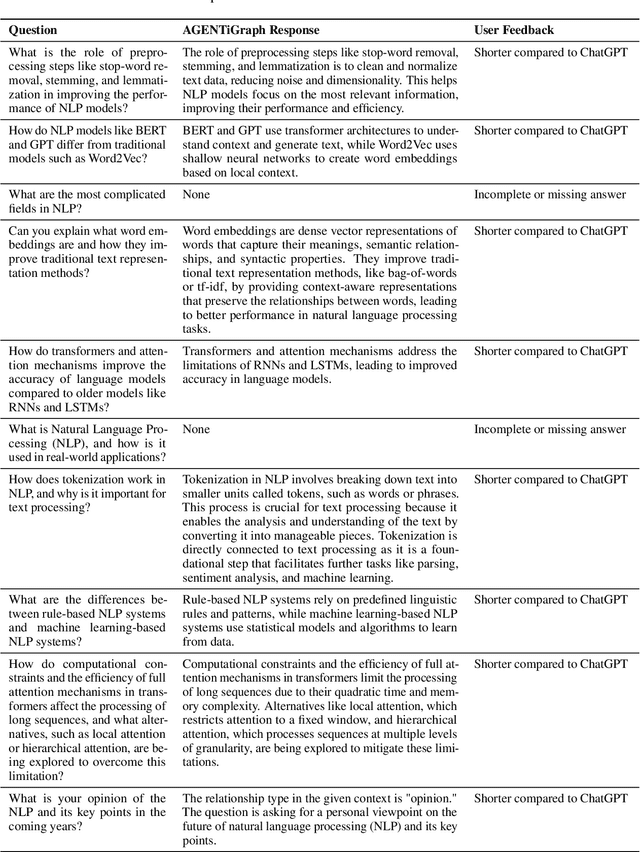
Abstract:Large Language Models~(LLMs) have demonstrated capabilities across various applications but face challenges such as hallucination, limited reasoning abilities, and factual inconsistencies, especially when tackling complex, domain-specific tasks like question answering~(QA). While Knowledge Graphs~(KGs) have been shown to help mitigate these issues, research on the integration of LLMs with background KGs remains limited. In particular, user accessibility and the flexibility of the underlying KG have not been thoroughly explored. We introduce AGENTiGraph (Adaptive Generative ENgine for Task-based Interaction and Graphical Representation), a platform for knowledge management through natural language interaction. It integrates knowledge extraction, integration, and real-time visualization. AGENTiGraph employs a multi-agent architecture to dynamically interpret user intents, manage tasks, and integrate new knowledge, ensuring adaptability to evolving user requirements and data contexts. Our approach demonstrates superior performance in knowledge graph interactions, particularly for complex domain-specific tasks. Experimental results on a dataset of 3,500 test cases show AGENTiGraph significantly outperforms state-of-the-art zero-shot baselines, achieving 95.12\% accuracy in task classification and 90.45\% success rate in task execution. User studies corroborate its effectiveness in real-world scenarios. To showcase versatility, we extended AGENTiGraph to legislation and healthcare domains, constructing specialized KGs capable of answering complex queries in legal and medical contexts.
CrossTalk: Intelligent Substrates for Language-Oriented Interaction in Video-Based Communication and Collaboration
Aug 07, 2023Abstract:Despite the advances and ubiquity of digital communication media such as videoconferencing and virtual reality, they remain oblivious to the rich intentions expressed by users. Beyond transmitting audio, videos, and messages, we envision digital communication media as proactive facilitators that can provide unobtrusive assistance to enhance communication and collaboration. Informed by the results of a formative study, we propose three key design concepts to explore the systematic integration of intelligence into communication and collaboration, including the panel substrate, language-based intent recognition, and lightweight interaction techniques. We developed CrossTalk, a videoconferencing system that instantiates these concepts, which was found to enable a more fluid and flexible communication and collaboration experience.
Open Problems and Fundamental Limitations of Reinforcement Learning from Human Feedback
Jul 27, 2023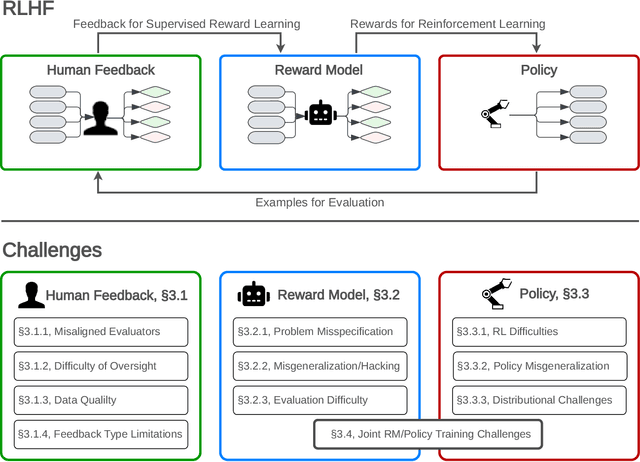
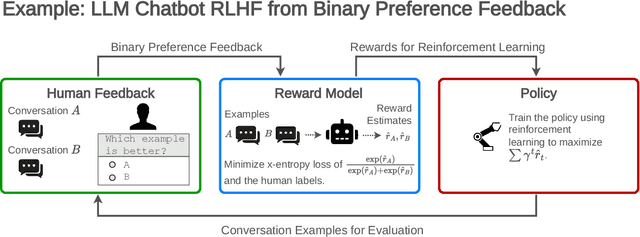
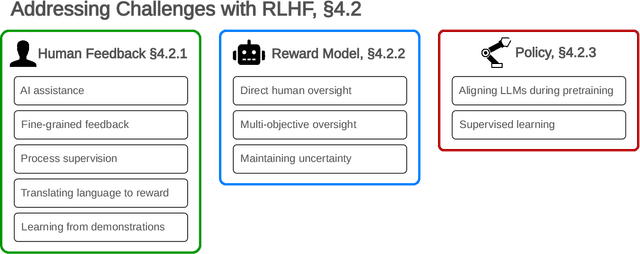
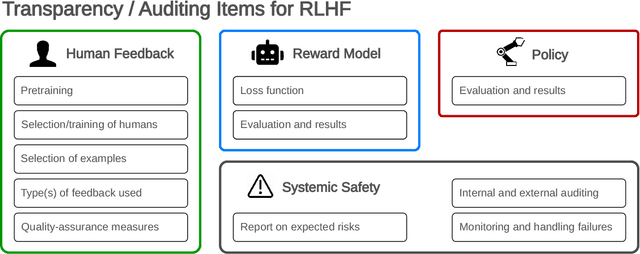
Abstract:Reinforcement learning from human feedback (RLHF) is a technique for training AI systems to align with human goals. RLHF has emerged as the central method used to finetune state-of-the-art large language models (LLMs). Despite this popularity, there has been relatively little public work systematizing its flaws. In this paper, we (1) survey open problems and fundamental limitations of RLHF and related methods; (2) overview techniques to understand, improve, and complement RLHF in practice; and (3) propose auditing and disclosure standards to improve societal oversight of RLHF systems. Our work emphasizes the limitations of RLHF and highlights the importance of a multi-faceted approach to the development of safer AI systems.
Neural-guided, Bidirectional Program Search for Abstraction and Reasoning
Oct 26, 2021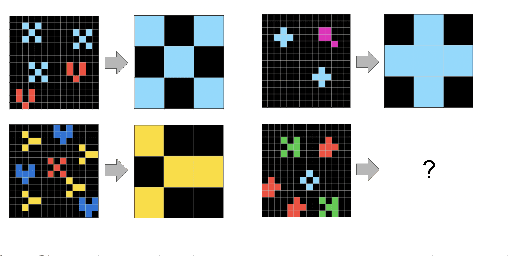



Abstract:One of the challenges facing artificial intelligence research today is designing systems capable of utilizing systematic reasoning to generalize to new tasks. The Abstraction and Reasoning Corpus (ARC) measures such a capability through a set of visual reasoning tasks. In this paper we report incremental progress on ARC and lay the foundations for two approaches to abstraction and reasoning not based in brute-force search. We first apply an existing program synthesis system called DreamCoder to create symbolic abstractions out of tasks solved so far, and show how it enables solving of progressively more challenging ARC tasks. Second, we design a reasoning algorithm motivated by the way humans approach ARC. Our algorithm constructs a search graph and reasons over this graph structure to discover task solutions. More specifically, we extend existing execution-guided program synthesis approaches with deductive reasoning based on function inverse semantics to enable a neural-guided bidirectional search algorithm. We demonstrate the effectiveness of the algorithm on three domains: ARC, 24-Game tasks, and a 'double-and-add' arithmetic puzzle.
Bidirectional Microrocker Bots with Sharp Tips Actuated by a Single Electromagnet
Oct 21, 2020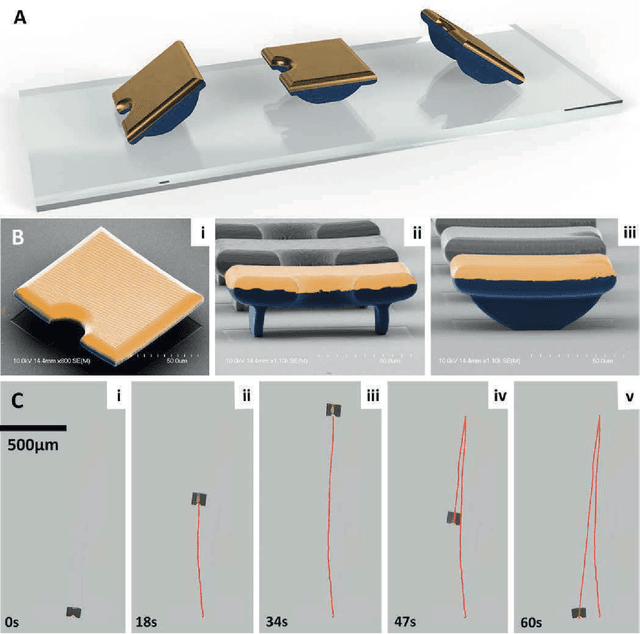



Abstract:The recent advancements in nanoscale 3D printing and microfabrication techniques have reinvigorated research on microrobotics and nanomachines. However, precise control of the robot motion and navigation on biological environments have remained challenging to date. This work presents the first demonstration of magnetic microscale rocker robot (microrocker bot) capable of bidirectional movement on flat as well as biological surfaces, when actuated by a single compact electromagnet. The 100um by 113um by 36um robot was 3D printed via two-photon lithography and subsequently coated with a nickel (Ni) thin film. When actuated by an externally applied magnetic sawtooth field, the robot demonstrated stick-slip motion enabled by its rockers. The controllable bidirectional motion is enabled by adjusting the DC offset of the waveform, which tilts the robot and biases it towards either forward or backward motion. The microrocker bots are further equipped with sharp tips that can get engaged via application of DC-only or low frequency magnetic fields. This novel control method offers an attractive solution to replace the multiple bulky coils traditionally used for magnetic actuation and control, as well as allows for a more flexible and simple approach towards microrobotics motion control. When the frequency and offset of the sawtooth waveform are optimized, the robot travels up to 87ums (0.87 body length per second) forward and backward with minor deviance from linear trajectories. Finally, to prove the robot's capabilities in direct contact with biological environments, we demonstrate the microbot's ability to traverse forward and backward on the surface of a Dracaena Fragrans (corn plant), as well as upend on its mechanical tip.
Identification of Pediatric Sepsis Subphenotypes for Enhanced Machine Learning Predictive Performance: A Latent Profile Analysis
Aug 23, 2019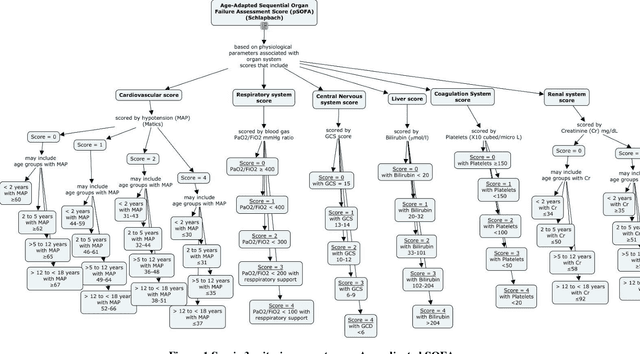
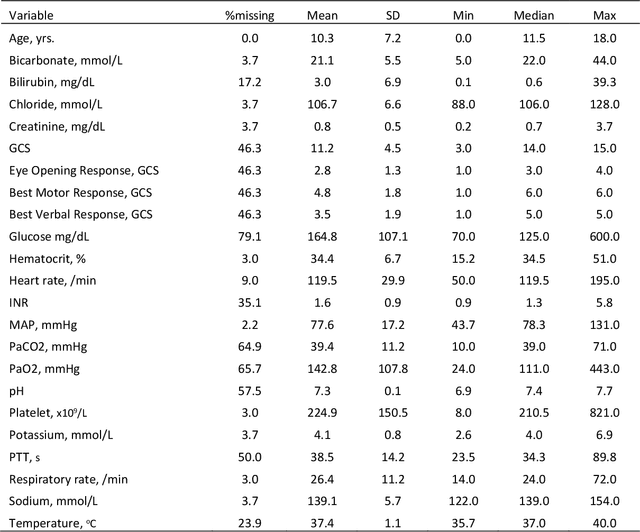
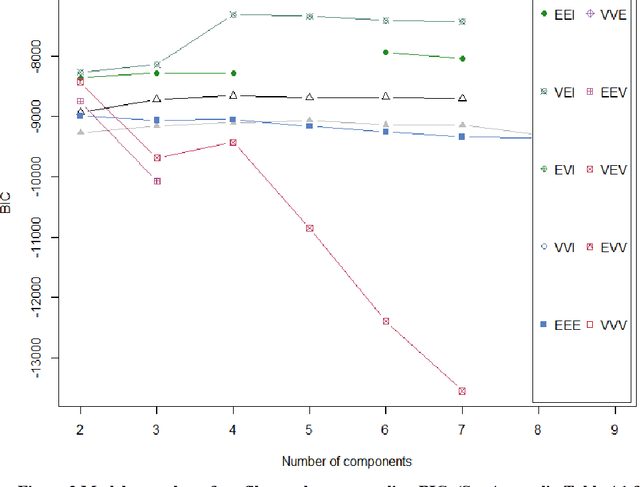

Abstract:Background: While machine learning (ML) models are rapidly emerging as promising screening tools in critical care medicine, the identification of homogeneous subphenotypes within populations with heterogeneous conditions such as pediatric sepsis may facilitate attainment of high-predictive performance of these prognostic algorithms. This study is aimed to identify subphenotypes of pediatric sepsis and demonstrate the potential value of partitioned data/subtyping-based training. Methods: This was a retrospective study of clinical data extracted from medical records of 6,446 pediatric patients that were admitted at a major hospital system in the DC area. Vitals and labs associated with patients meeting the diagnostic criteria for sepsis were used to perform latent profile analysis. Modern ML algorithms were used to explore the predictive performance benefits of reduced training data heterogeneity via label profiling. Results: In total 134 (2.1%) patients met the diagnostic criteria for sepsis in this cohort and latent profile analysis identified four profiles/subphenotypes of pediatric sepsis. Profiles 1 and 3 had the lowest mortality and included pediatric patients from different age groups. Profile 2 were characterized by respiratory dysfunction; profile 4 by neurological dysfunction and highest mortality rate (22.2%). Machine learning experiments comparing the predictive performance of models derived without training data profiling against profile targeted models suggest statistically significant improved performance of prediction can be obtained. For example, area under ROC curve (AUC) obtained to predict profile 4 with 24-hour data (AUC = .998, p < .0001) compared favorably with the AUC obtained from the model considering all profiles as a single homogeneous group (AUC = .918) with 24-hour data.
Using Latent Class Analysis to Identify ARDS Sub-phenotypes for Enhanced Machine Learning Predictive Performance
Mar 28, 2019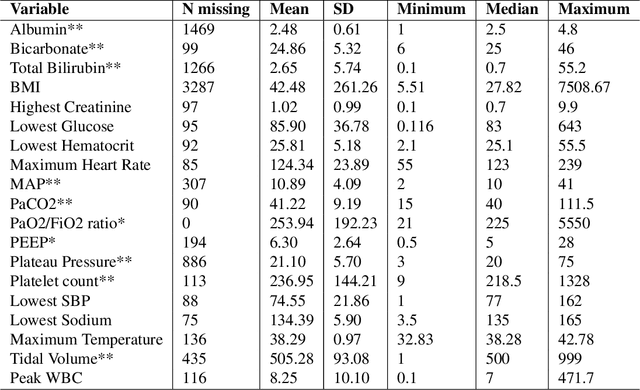

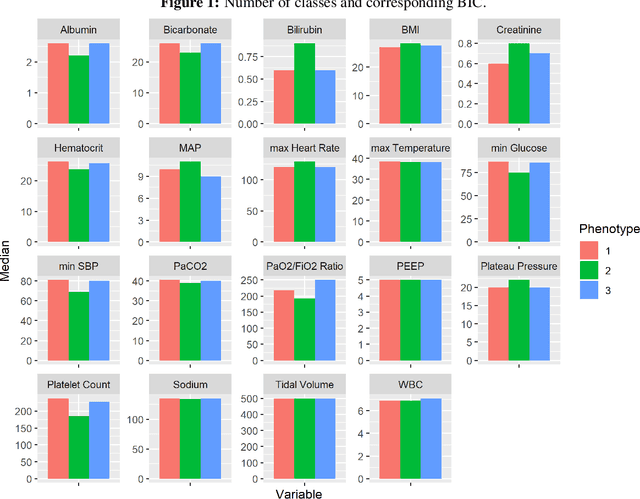
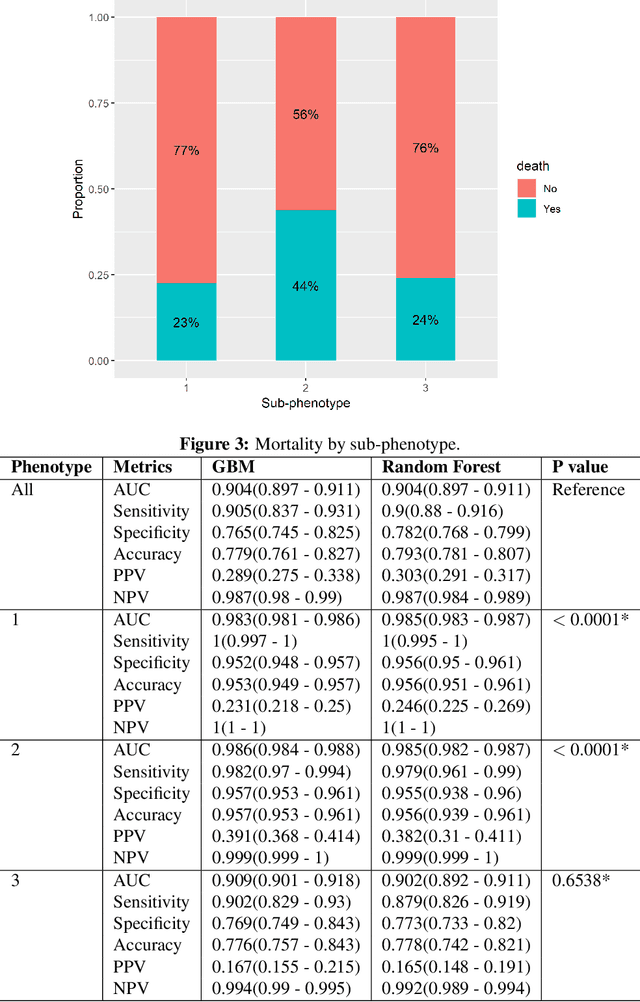
Abstract:In this work, we utilize Machine Learning for early recognition of patients at high risk of acute respiratory distress syndrome (ARDS), which is critical for successful prevention strategies for this devastating syndrome. The difficulty in early ARDS recognition stems from its complex and heterogenous nature. In this study, we integrate knowledge of the heterogeneity of ARDS patients into predictive model building. Using MIMIC-III data, we first apply latent class analysis (LCA) to identify homogeneous sub-groups in the ARDS population, and then build predictive models on the partitioned data. The results indicate that significantly improved performances of prediction can be obtained for two of the three identified sub-phenotypes of ARDS. Experiments suggests that identifying sub-phenotypes is beneficial for building predictive model for ARDS.
 Add to Chrome
Add to Chrome Add to Firefox
Add to Firefox Add to Edge
Add to Edge